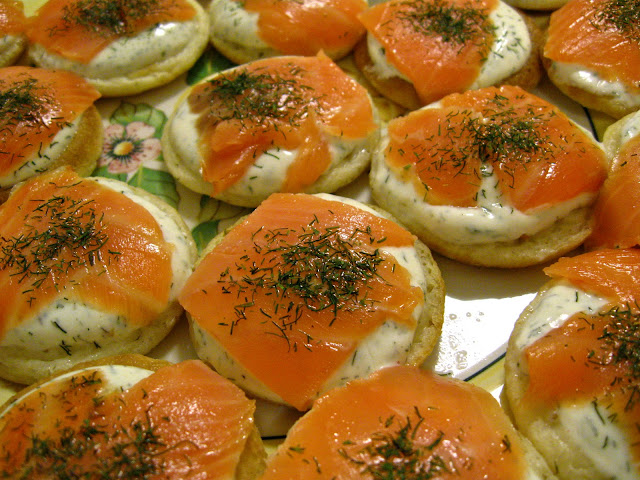
Selle salati retsept on pärit käesoleva kuu Oma Maitsest, millele ma tänu oma Eestist külas käinud tädile küüned külge sain. Kohendasin veidi koguseid ja tegin teise kastme. Kuna viimane nädal on olnud äärmiselt kevadine ja soe, siis sõin seda peale aiamööbli õue tirimist terassil. Imeilusa päikeselise ilmaga sobis kerge salat koos koduse leivaga ideaalselt.
Vaja läheb (ühele):
1 väike sibul
teelusikatäis võid
pool keskmist pomelit
pool avokaadot
50 g suitsulõhet
sidruni mahla
4-5 peotäit värsket salatit
sidruni mahla
Kaste:
1 spl majoneesi
1 spl maitsestamata jogurtit / hapukoort
0.5 tl meesinepit (või mõnda muud tavalisest magusamat, näiteks viigimarjasinepit)
tilli
näpuotsatäis soola
soovi korral mett
Sega omavahel kastmeained. Viiluta sibul ja prae võis, keskmisel kuumusel, kuldseks. Koori pomel, puhasta kilest ja tee väiksemateks tükkideks. Lõika avokaado pooleks, eemalda kivi, koori ja lõika tükkideks. Pritsi tükeldatud lõhele ja avokaadole peale veidi sidrunimahla, eriti sellele poolele, mida sa ei kasuta, sest muidu läheb ta pruuniks. Pane kõik ained kaussi, kalla üle kastmega ja sega läbi.
---------------------------------------------------------------------------------------------------------------------------------
Since the weather has been just wonderful for the past week, we dug out our garden furniture and I used my chance to dine on the terrace. I generally like twisted food, as in bizarre stuff in them so I was drawn to the pomelo salad the second I saw it in an Estonian cooking magazine. A light and fresh pomelo salad with homemade bread was just perfect with this weather.
For one you'll need:
1 small onion
1 tsp of butter
half of a medium sized pomelo (mine was the size of a big orange)
half an avocado
50 g of smoked salmon
4-5 handfuls of fresh salad
Sauce:
tbsp of mayonnaise
tbsp of natural yoghurt
0.5 tsp of honey mustard (or any other sweeter one, I used fig mustard)
dill
pinch of salt
Mix the sauce ingredients together. Chop the onion and fry at medium heat in the butter until golden-brown. Peel the pomelo, remove the film-like part and cut the segments into smaller pieces. Cut half of the avocado and the salmon into smaller pieces and sprinkle some lemon juice on them, as well as the other half you are not using, as it will turn grey otherwise. Mix the sauce and all the other ingredients.






































